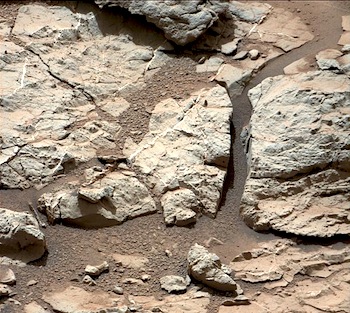 For centuries, people have imagined the possibility of life on Mars, but probes have so far uncovered no life at all. Yet Mars does have evidence that a prime condition for life once may have existed there: water.
For centuries, people have imagined the possibility of life on Mars, but probes have so far uncovered no life at all. Yet Mars does have evidence that a prime condition for life once may have existed there: water.
“There has been a tremendous amount of very exciting findings this year that Mars once contained actively flowing, low-saline, near-neutral-pH water — pretty much the type of water where you find life on Earth today,” says Alison Olcott Marshall, of the University of Kansas. Olcott Marshall is working with her colleague and husband, Craig Marshall to improve ways to detect condensed aromatic carbon, thought to be a chemical signature of astrobiology.
“If we’re going to identify life on Mars, it will likely be the fossil remnants of the chemicals once synthesized by life, and we hope our research helps strengthen the ability to evaluate the evidence collected on Mars,” Craig Marshall says. He is an expert in using Raman spectroscopy to look for carbonaceous materials, while Alison Olcott Marshall is a paleontologist interested in how the record of life gets preserved on Earth, especially when there is no bone or shell or tooth or other hard part to fossilize.
According to a recent paper by the Marshalls in the peer-reviewed Philosophical Transactions of the Royal Society, by itself Raman spectroscopy is able to screen for carbonaceous material, but it can’t determine its source — thus the technology needs to be supplemented in order to determine if life exists on Mars.
“Raman spectroscopy works by impinging a laser on a sample so the molecules within that sample vibrate at diagnostic frequencies,” Craig Marshall said. “Measuring those frequencies allows the identification of inorganic and organic materials. It’s insufficient because however the carbonaceous material is made, it will be the same chemically and structurally, and thus Raman spectroscopy cannot determine the origin.”
The Marshalls call for the use of gas chromatography/mass spectroscopy to supplement Raman spectroscopy and develop more conclusive evidence of ancient extraterrestrial life. [More at links]








